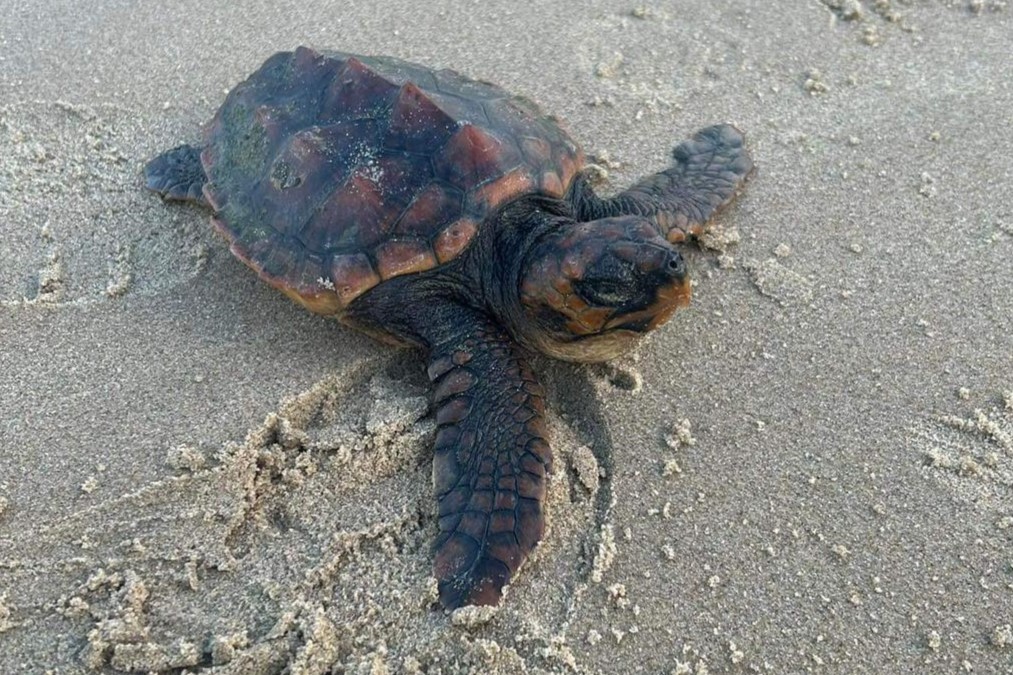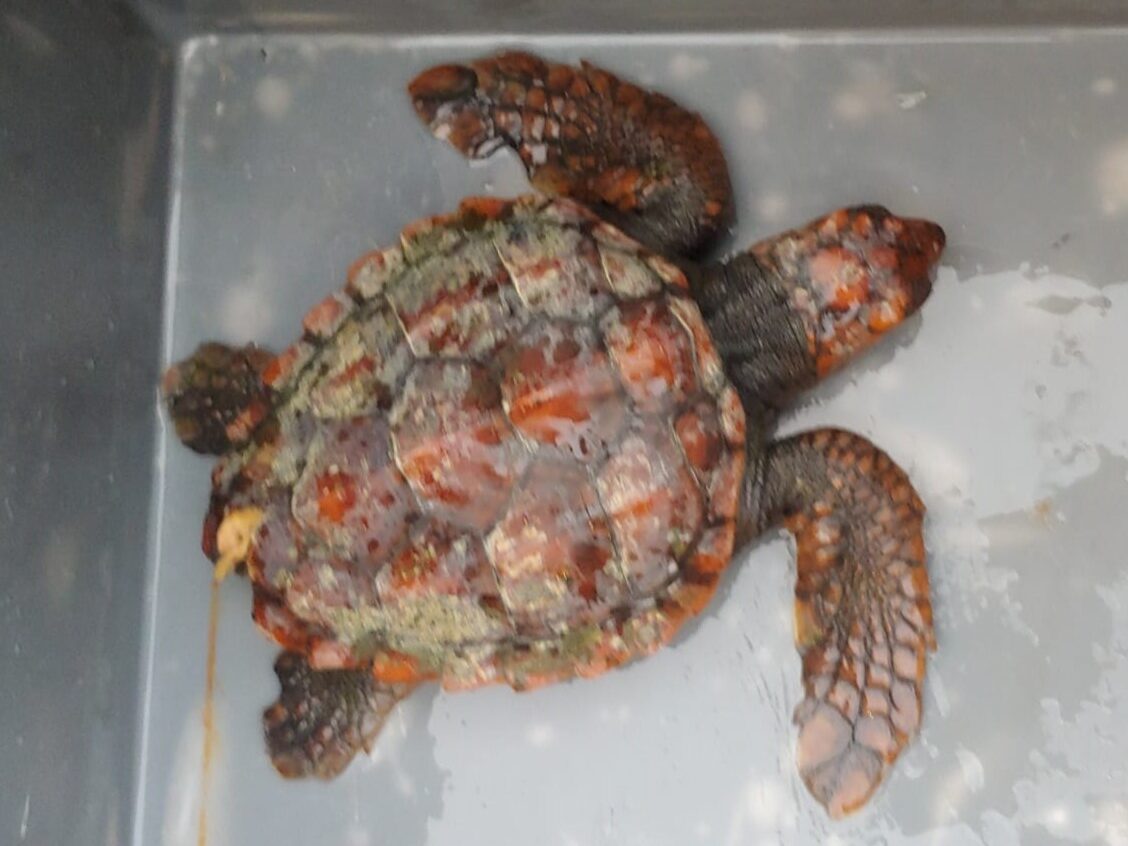On Saturday, November 25, 2023, a live Loggerhead turtle washed up on the beach of Bredene. This species has never before been identified with certainty in Belgium. The animal is currently being closely monitored in SEA LIFE Blankenberge.

Strong northwesterly winds are known to cause all kinds of dead and living material from the sea to wash up on our coasts, and the storm of November 24-25, 2023 was no different. Sometimes surprising animals or objects are also found in the wash-up. In the afternoon of November 25, walkers on the beach of Bredene came across nothing less than a live sea turtle.
The young animal, with a carapace length of only 14 cm, was recovered from the beach by the Ostend fire brigade and reported to the experts of the Institute of Natural Sciences, who identified it as a very young Loggerhead turtle (Caretta caretta). The Institute then arranged for the transport of the lost animal to Sea Life Blankenberge.

First time in Belgium?
Although the Loggerhead Turtle is not exclusively confined to warm waters and is one of the most widespread sea turtles, the North Sea falls outside the range of this species. A number of strandings are known from the Netherlands, including from the 21st century, but as far as we know there have been no confirmed sightings from Belgium. Some old cases are questionable or involve sea turtles of unknown identity. Bredene’s turtle could therefore go down as the first confirmed Loggerhead turtle in Belgium.
When Loggerhead turtles hatch from the egg, their carapace is only 4 to 5 cm long. The carapace of adult animals can reach a length of more than one meter. The animals that previously washed up in the Netherlands had widely varying carapace lengths, from about 20 cm to almost a meter. These therefore involved animals of varying ages, but most were immature. Female Loggerhead turtles only reproduce when they reach a carapace length of 70-80 cm, and are then at least almost 20 (to more than 30) years old.
Atlantic origin?
The Loggerhead turtle is found in all oceans except the polar regions. Like all sea turtles, they lay eggs on beaches. The closest laying beaches to us are in the Mediterranean Sea, but that does not mean that the Bredene turtle comes from there. In the Atlantic Ocean, the main breeding areas should be sought in the Cape Verde Islands (East Atlantic) and in the south-east of North America (Florida, Gulf of Mexico; West Atlantic), and an Atlantic origin is certainly possible in the case of the Bredene Loggerhead turtle.
This can be explained as follows. Immature Loggerhead turtles from North America and Cape Verde make a multi-year tour of the Atlantic Ocean before returning to their native areas. During this life stage, strong currents can cause them to drift away, with the youngest – and therefore smallest – specimens being at greatest risk. Western currents in the Atlantic Ocean mainly occur in autumn and winter, so it is no coincidence that sea turtles in the North Sea also appear most often during this period.
The northwesterly storm of November 24-25, 2023 also caused a lot of material to wash ashore that certainly has an Atlantic origin. In addition to driftwood and other objects with Atlantic biological growth (such as many goose barnacles), this also included buoys from the United States and Canada. It is therefore not unlikely that the Loggerhead Turtle came to us from the Atlantic Ocean on November 25 with the same westerly current.
However, it cannot be deduced from this where the Belgian Loggerhead Turtle was born. For another species that previously washed up along North Sea coasts, the Kemp’s Ridley Turtle (with a dead specimen in Belgium, on January 6, 2012 in Nieuwpoort), a transatlantic origin is the only possibility, because this species only reproduces in the Gulf of Mexico.
Rehabilitation
Because sea turtles that wash up alive in our region have ended up in an area that is unfavorable to them, shelter is always being considered. The Bredene Loggerhead Turtle also had damage to the back of the carapace. SEA LIFE Blankenberge is authorized to take sea turtles into care and organized an initial examination by a veterinarian immediately upon the animal’s arrival. The weight was 770 g, some barnacles were professionally removed from the abdominal shield and a course of antibiotics was started. Additional examination will follow on November 26, during which the animal will be internally screened with x-ray.
The Loggerhead Turtle stays in SEA LIFE Blankenberge in a tank of a suitable size for the animal, where the water temperature is systematically raised. It is still too early to determine whether the animal can be released back into the wild, and where or when that could possibly happen.
